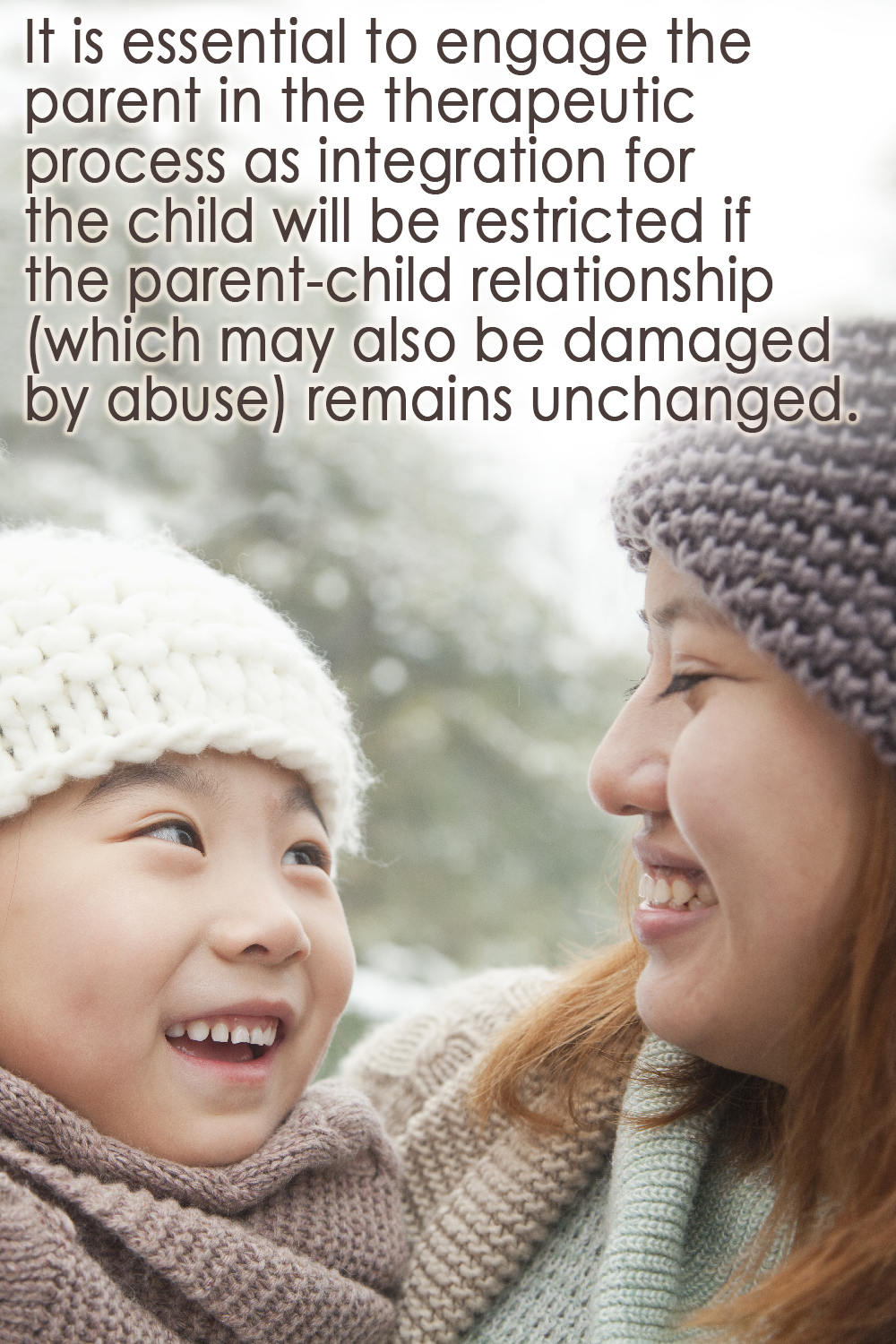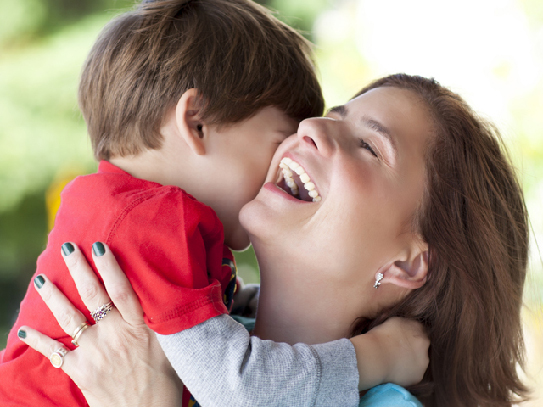
The importance of holding the traumatised parent in child trauma work

This article was authored by Tamara Wolan and Jaclyn Guest, Senior Counsellors,
Child Trauma Service Victoria, at the Australian Childhood Foundation.
When a child walks into our counselling office, so much more comes with them. The child might be our client, but children always exist within families and systems and these too are often traumatised. So how, as therapists, do we strike the balance of working with both, for the benefit of the child?
In some ways, child trauma therapy is an art, one that not only involves engagement with a traumatised child, but also holding and engaging the traumatised system and parent that the child brings with them into the counselling room. One dictionary definition is “to bear, sustain, or support, as with the hands or arms, or by any other means”, and this is perhaps the closest to what we mean. This ‘holding’ isn’t literal, but metaphorical, where the role of the parent and the system with regard to the child is held in mind, is sustained and is supported by the therapeutic process. It is  essential to engage the parent in the therapeutic process as integration for the child will be restricted if the parent-child relationship (which may also be damaged by abuse) remains unchanged.
essential to engage the parent in the therapeutic process as integration for the child will be restricted if the parent-child relationship (which may also be damaged by abuse) remains unchanged.
This work with parents can be difficult. Working with traumatised children can invoke strong reactions and feelings in us as therapists. We often feel anger, pain and sadness for them. It is can be easy to connect empathetically with the child who sits before us and has been violated by the adults around them. It can be more difficult to empathise with the parent who sits before us in the counselling room, especially when they have been involved in causing the difficulties their child faces. These parents have often suffered their own childhood trauma history and come to see us with strong defences build up to protect them from their own experiences of shame. They might react to the child’s behaviour and reject the underlying experience of the child. They may expect you to ‘fix’ the child and be threatened by the idea that they need to lead the reconnection in the parent-child relationship. These defences are in place because these parents, like their children, have learnt to distrust others. They do not hold a felt sense of safety with us and do not believe that we care about them.
Working with such defences can make us as the therapist feel “less that competent”, and can activate within us all our own sense of insecurity about our effectiveness. It can be easy to dismiss these them as signs that the parent is “disengaged”, “lacks insight”, and is “too hard to work with.” And, since we can find the child work rewarding and the parenting work hard, this might make it tempting to work only with the child individually and exclude parent.
For these reasons, we felt it might be useful to hold a brief discussion here on Prosody about the ways that we have learnt to hold both the parent and the child in trauma therapy.
Often we are confronted with a parent who is not able to sit and hold the emotional world of their child. This occurs because they themselves have never had their own emotional world held. So, in order to help the child in trauma therapy, we often must help the parent to reconnect and attune to their child. In fact, they are only able to accomplish this goal if we can develop a close and trusting relationship that will allow them to drop their own defences and explore a new parenting narrative for themselves.
 Our parent-child work at the service is strongly influenced by the PACE model developed by Daniel Hughes. PACE includes Playfulness, Acceptance, Curiosity and Empathy, and it is our experience that parents often need the PACE approach just as much as the child. The use of playfulness, humour and empathy allows for trust and connection to occur without activating shame or blame in the parents. It often takes longer to establish trust and connection with a traumatized parent than it does to establish the same trust with the child. In fact, most of the times, if we can get the parent to trust and engage with us, our work on engaging with the child is almost complete. The child follows the lead and direction of their parent and will likewise follow their verbal and non-verbal signals. If the parent trusts you as a therapist and the service, their openness to therapeutic work also gives the child confidence to explore their trauma story. Daniel Hughes argues that as a therapist you must find something you like about your client to connect with them. We would agree and add that you must work to find some elements that you can work and relate with. If you constantly feel you are dreading your time with the parent, and feel they are hard to work with and unable to shift, they will pick up on these cues and will put their defences up.
Our parent-child work at the service is strongly influenced by the PACE model developed by Daniel Hughes. PACE includes Playfulness, Acceptance, Curiosity and Empathy, and it is our experience that parents often need the PACE approach just as much as the child. The use of playfulness, humour and empathy allows for trust and connection to occur without activating shame or blame in the parents. It often takes longer to establish trust and connection with a traumatized parent than it does to establish the same trust with the child. In fact, most of the times, if we can get the parent to trust and engage with us, our work on engaging with the child is almost complete. The child follows the lead and direction of their parent and will likewise follow their verbal and non-verbal signals. If the parent trusts you as a therapist and the service, their openness to therapeutic work also gives the child confidence to explore their trauma story. Daniel Hughes argues that as a therapist you must find something you like about your client to connect with them. We would agree and add that you must work to find some elements that you can work and relate with. If you constantly feel you are dreading your time with the parent, and feel they are hard to work with and unable to shift, they will pick up on these cues and will put their defences up.
One way we do this building of trust is by being available to these parents. Earning respect in their eyes by making sure we can attend most of the meetings with others services, by following up with them via phone and emails in-between sessions and providing them with ongoing support in their parenting role, particularly at times of crisis. This follow-up is even more important after a difficult session, to demonstrate to the parent that we can tolerate and remain present even after ruptures in our own relationship. In a way this therapeutic work is a type of re-parenting for the parent so they can become available to their own child. The skill of child trauma therapists is not only in their engagement with the traumatised child, but in holding and working with the traumatised system and parent that the child brings along with them into the counselling room.
